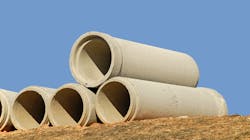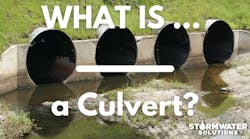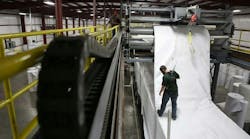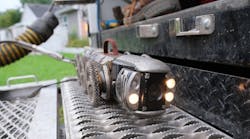An important part of stormwater management, especially for areas with significant impervious cover, is the storm drainage system. Drainage pipes can prevent flooding and direct runoff to a desired location.
The materials that make up these pipes will have a significant impact on their effectiveness — some materials are more affordable and easier to install, while others are more resilient and longer-lasting.
So what, then, is the best material for a given project? The best, shortest answer is: it depends. Most importantly, it depends upon coordinating the project’s characteristics with a material’s unique advantages.
This article will take a look at some of the unique characteristics of popular drainage pipe materials, helping to clarify what materials will work best for what scenarios.
Circumstances to keep in mind
Every stormwater management project is unique, with countless unique circumstances. It is no surprise, then, that each type of drainage pipe material comes with its own unique advantages and drawbacks.
Some of the most popular drainage pipe materials are:
- Concrete,
- High-density polyethylene (HDPE), and
- Corrugated metal
There are countless other materials that this article will not cover, including clay, polypropylene, and unreinforced concrete.
Choosing the best pipe material for the project means aligning the material’s unique advantages with the project’s unique requirements.
The available budget for a project can be one of the most influential factors in choosing a pipe material. The surrounding area will also have its own expected flow rates, soil types, available space, traffic loads, and chemical exposures, among other factors.
These circumstances will influence the end-goals of choosing a drainage pipe material: structural performance, effective hydraulic function, a long service life, and an affordable installation.
However, drainage pipe materials’ unique characteristics are constant between every project.
Each pipe material’s unique characteristics
Concrete
Concrete pipes are the choice material when strength and durability are a priority. Reinforced concrete can bear heavy loads, is quite resistant to corrosion, and provides a long service life.
“It's a structure and a conduit,” said Donald McNutt, a Great Lakes Region engineer for the American Concrete Pipe Association. “When the pipe shows up on the truck, the vast majority of the strength of the whole system shows up on the truck. That's partly why it costs more. It's concrete. It's reinforcing steel. It's a structure. If you're going to look at the other competitive products, they don't show up as a structure. The structure has to be built in the field with the soil in a proper installation. So the other products are a lot more installation sensitive in concrete pipe. Concrete pipe is strong.”
The strengths of concrete can also pose problems. Concrete pipes can be very heavy, leading to increased costs. Installation may require specialized equipment, and pre-cast concrete pipes can require costly transportation. The rough inner surface can also cause sediment buildup.
“Probably the biggest drawback is its cost versus the competitive product,” said McNutt. “Other than that, I don’t think there are any drawbacks for choosing concrete pipe.”
Corrugated metal
Corrugated metal pipes are often constructed of galvanized steel or aluminum. The corrugated pattern can be very important in stormwater conveyance. Corrugations can create turbulence in the water flow, preventing blockages and better regulating the depth/velocity of conveyed runoff, while also enhancing the pipe’s load-bearing capacity. They are strong and durable, but without the heaviness of concrete.
If they aren’t properly coated and maintained, corrugated metal pipes can quickly become susceptible to corrosion and rust. Sediment can also accumulate in the corrugations, reducing its effectiveness over time.
High-density polyethylene
HDPE is a plastic that comes with high affordability and excellent corrosion resistance.
The plastic boasts a long service life when installed properly. Because of its light weight, HDPE pipes can be easy to handle and install. It is also slightly flexible, allowing it to tolerate some ground movement without cracking. HDPE pipes can have a smooth interior and corrugated exterior, allowing for both smooth conveyance and enhanced load capacity.
However, HDPE pipes can be very sensitive to installation conditions. Heavy loads or excessive heat can deform the pipes, and certain chemicals can still quickly degrade the plastic.
More drainage pipe considerations
The context and requirements of the project are the ultimate factors in choosing a pipe material.
Each state or municipality can also have its own guidance for choosing a material. For example, some states have resources like drainage user manuals. These manuals may dictate that locations with invert slopes less than 10% should use reinforced concrete, while allowing for variations under the engineer’s discretion.
Ultimately, a solid understanding of drainage pipes materials’ advantages will help to decide which material is best for a given part of a drainage system.






